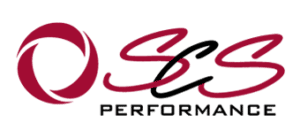Crafting Compelling Copy for Irresistible Sales
If someone said to you, “you’re going to want that Kidney..” – would you pay attention? I did. How about if someone said, “if left alone, it will continue to devour the cells around it” – do you think you would listen to what they said next? It got me.
Both examples are Compelling Copy.
I appreciate that both are medical based, however each show how compelling copy can entice or intrigue the audience into wanting to know more or to do something – which is typically the intent of any marketing.
Headline comments are perhaps the most critical element to draw readership to your material. Some of copywriters I follow, claim up to 70% of the value of an article is in the headline.
The headline needs to do the heavy lifting of attracting attention and drawing the reader into the first paragraph. The first paragraph then needs to meet the expectations of the reader and justify in their mind, that its worth investing the time to read the full article. Naturally font’s, article positioning and pictures also add weight to the read rate of an article – but for the purposes of this piece, I will assume that these points are constant.
So what makes compelling copy?
Well…if you have read thus far, then by default, you must have found the headline enticing enough to open the article. Then, if you have got this far – I must have been able to justify to you, that it was worth reading further. So, let’s break this down a bit;
Headline
To start, my headline is a statement of only 4 words. Now I’m not saying it is the best headline I have ever written, but I intentionally used a slightly unusual term (Compelling Copy) to intrigue the reader as to “what’s that about?”. I also used the subject category of Sales, which I know is of interest to most businesses. Just about every business I know, want’s to either sell more or sell easier – so the Sales category was chosen to have wide appeal.
I find brainstorming a headline after I have written the article is the easiest – as I have a clear view of the article that it relates to. Typically, I will write 4, 5 or 6 headlines (and sometimes more) to find one that I like. The tests that I use, include;
- Does it represent the article? – for me it must be a Yes. This is a personal choice, as I have always felt a bit let down when I get enticed into an article by a good headline, just to find that the article has nothing to do with it.
- Does it entice or intrigue? – In a world where we are spoilt for options in relation to media content, the headline must instantly trigger a reason for me to open it. Entice or intrigue are the best terms I know to describe this – so if I read a headline which is bland, boring or ho hum – then it has failed.
- It is congruent with my branding and am I happy to be associated with it? – what I mean here, is that you can have a very intriguing headline which is not socially appropriate or does not align to you or your brand. If you are worried that a headline may step over the line, then make a clear decision to either use it or not, as once it is published, there is no turning back.
- Will this headline search well on the web? Can I see people searching the headline to improve the audience of the article? If this is a no, then you may want to consider the headline a bit more – albeit it does depend on the purpose of your article.
The First Paragraph
If the headline is the bait, then the first paragraph is surely the hook. The first paragraph needs to capture the reader to read on. In this case, I used two examples of what I considered were compelling copy to essentially prove the point I was making. By reading on, my point was proven.
The examples I used were very emotive – on purpose. Granted they were health based, but there are many emotive triggers which can be drawn into copy; health, wealth, safety, relationship, wealth, loss etc – just to name a few. When writing for marketing/sales, connecting at an emotional level is critical.
A couple of other points from my first paragraph.
- I made my point fast – typically, 2 or 3 sentences is about all you have, so make them count. If your killer point is buried five paragraphs down, then many will never read it.
- Write in the voice and style which your target audience will understand. If it’s a technical audience, then pitch with a technical style. If it’s an internal document, then local jargon may assist. By writing to your audience, it assists in building credibility and helps the reader with a quick understanding of your article.
- Consider your word choices. The word “devour” for me adds so much more depth and interest than simply “eat”.
If you are not confident about the copy you write, then either engage someone who is OR practice OR both. Putting yourself in the shoes of your audience will quickly show if you are writing Compelling Copy which Sells….or not.
SCS Performance provides a range of business coaching and consultancy services, so if you are looking at how you market – or the return on your current advertising, contact us today to discuss some solutions.












